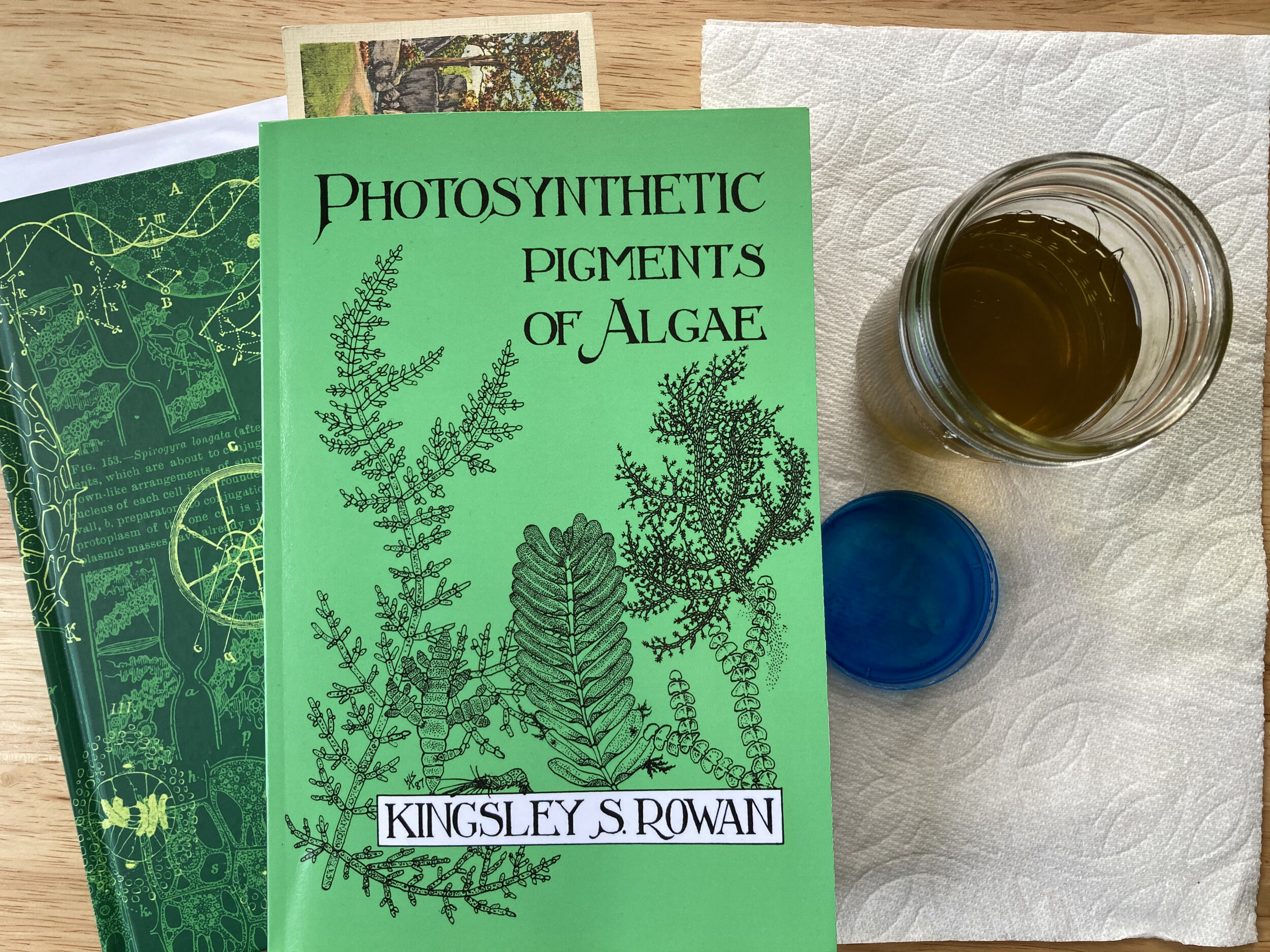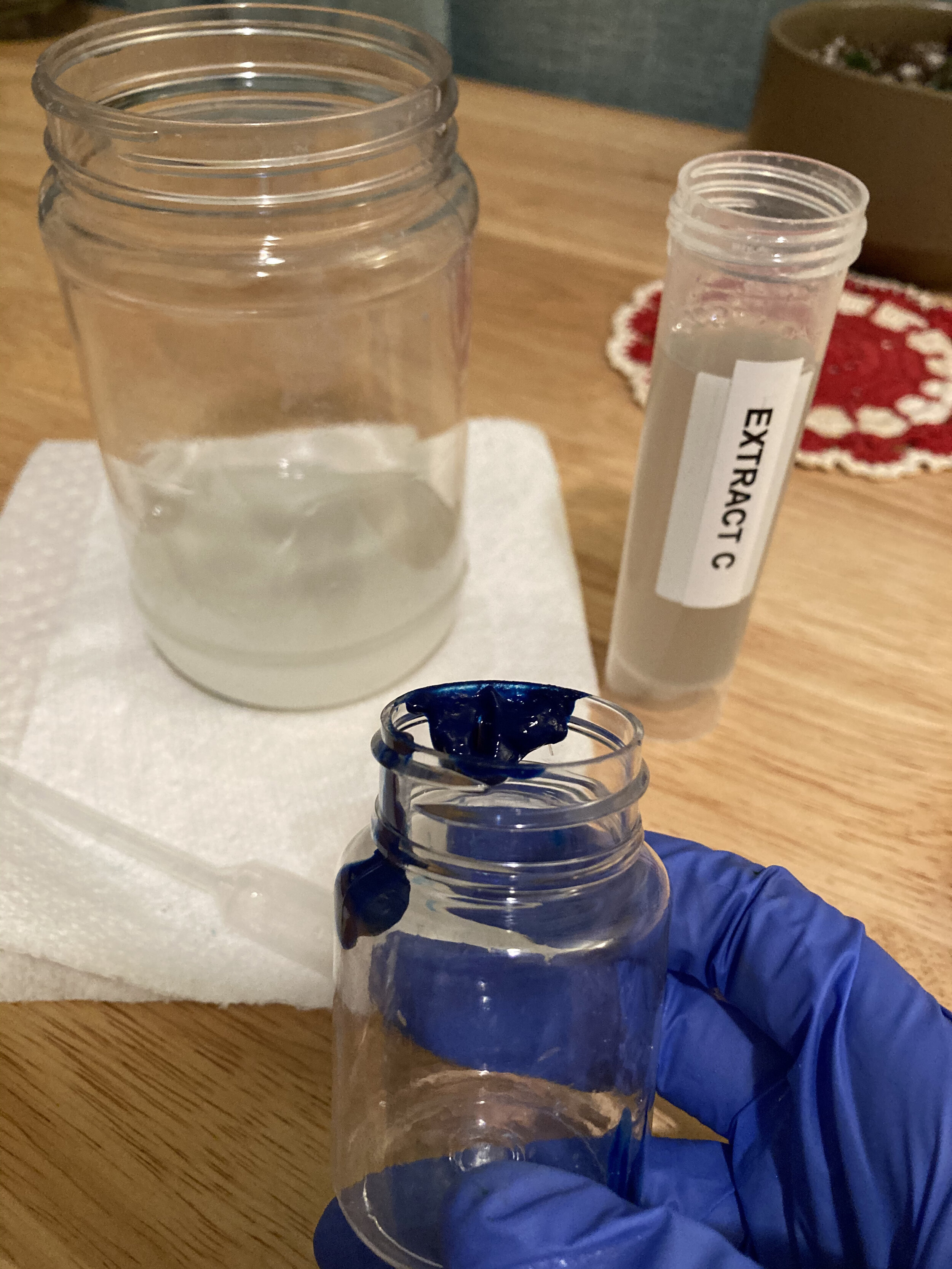Microalgae Pigment Extraction and Color Experiments



In January 2021, I took a virtual class held by GenSpace covering spirulina algae pigment extraction. GenSpace partnered with artist Sasha Fishman and biotechnology company founder Elliot Roth of Spira, Inc. to teach artists how to grow, extract, and dye with the blue pigment readily extracted from Arthrospira cyanobacteria, commonly known as Spirulina. This session was an inspiration for me, opening my mind to the possibility of my beloved algae becoming the very material I made art with.
Using the knowledge I gained from that class, a crash course in biochemistry, lots of trial and error, and countless experiments, I have entered an algae frenzy. I now have my own algae farm, extract my own pigments, am keeping a lab log of my pigment extraction process, and have made contacts with artists, scientists, and biotechnology companies around the world.
Currently, I am extracting my own pigments as well as using laboratory extracted pigments to make paintings of the microorganisms that provided the pigment colors. A huge volume of microalgae cell mass is required to manufacture small quantities of pigment, something my one-gallon bioreactors don’t provide. Through investigation and generous partnerships with various biotechnology companies, I have been able to build a color wheel of algae pigments to work with.
The resultant paintings use negative space, the absence of pigment, to represent the forms of the algae. This honors how the algae have given their pigmentation up to the core background color of the pieces. Paintings are further outlined with pen and ink to add detail to the cell forms.
Goals and Constraints
My algae extraction goals are simple.
Develop a consistent way for home scientists to extract algae pigments with common household tools and ingredients.
My rules were this:
No toxic chemicals (dangerous solvents or acids)
No special equipment (centrifuges, fumigation hoods, etc.)
No special processes (membrane filtration, etc.)
Algae pigment extractions should be able to be done with easy-to-get stuff using basic processes. I acknowledge that my results aren’t as pure or rigorous as those done in lab settings, but when gravity, coffee filters, and 190-proof moonshine can do the job, we should use them!
Using these methods, my long-term goal is to be able to collect algae samples from different locations around the world, extract pigments from a mixed microbiome, and synthesize “a color of a place.”
Algae Farming
Part of the fun of this project has been growing algae to experiment with. My algae enthusiasm has resulted in my having a rotating group of active bioreactors, and starting my own algae farm. I am currently growing a variety of organisms that are prized for their potential biofuel, cosmetic, or food uses as well as organism mixes from natural sources.
Some of the algae I am using is hard to find, thus the need for algae self-reliance!
